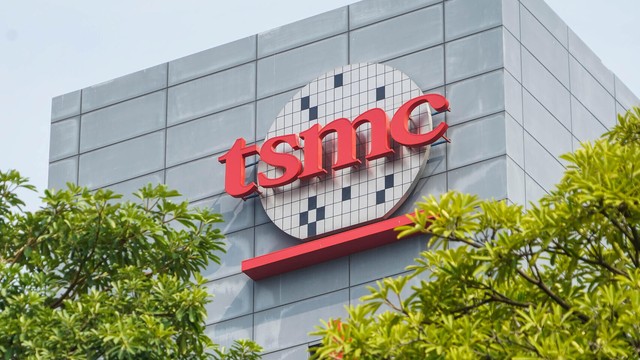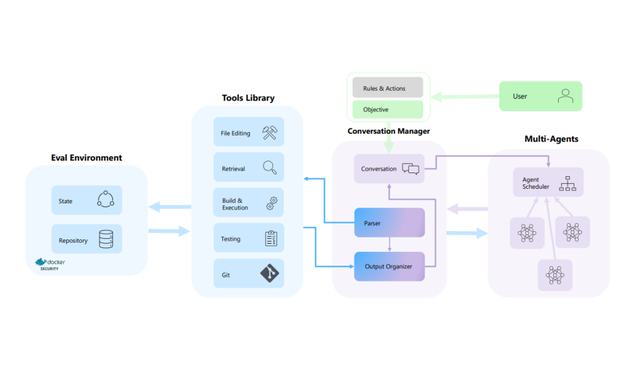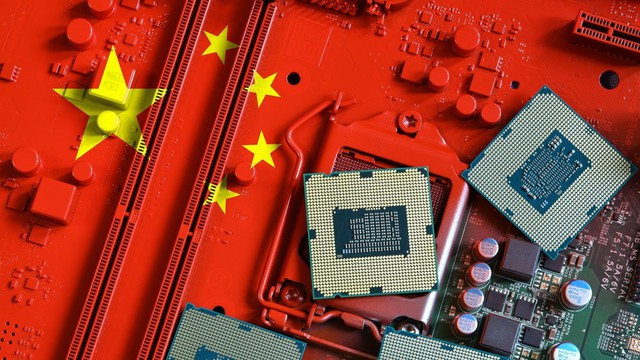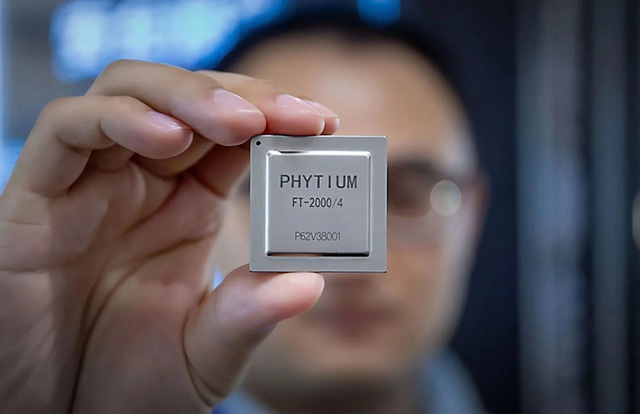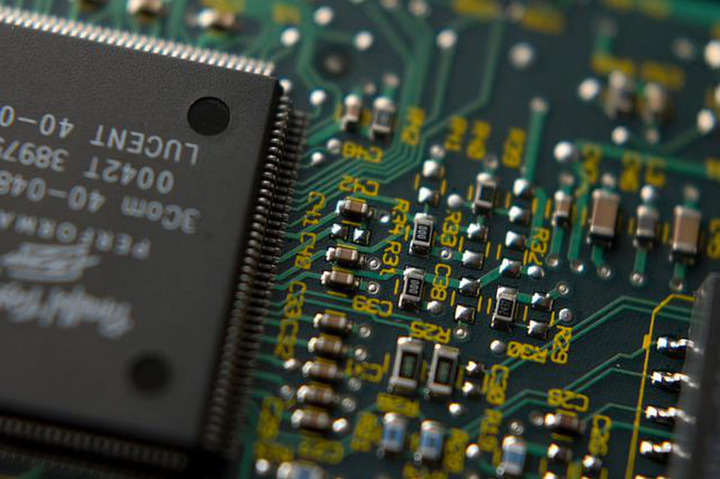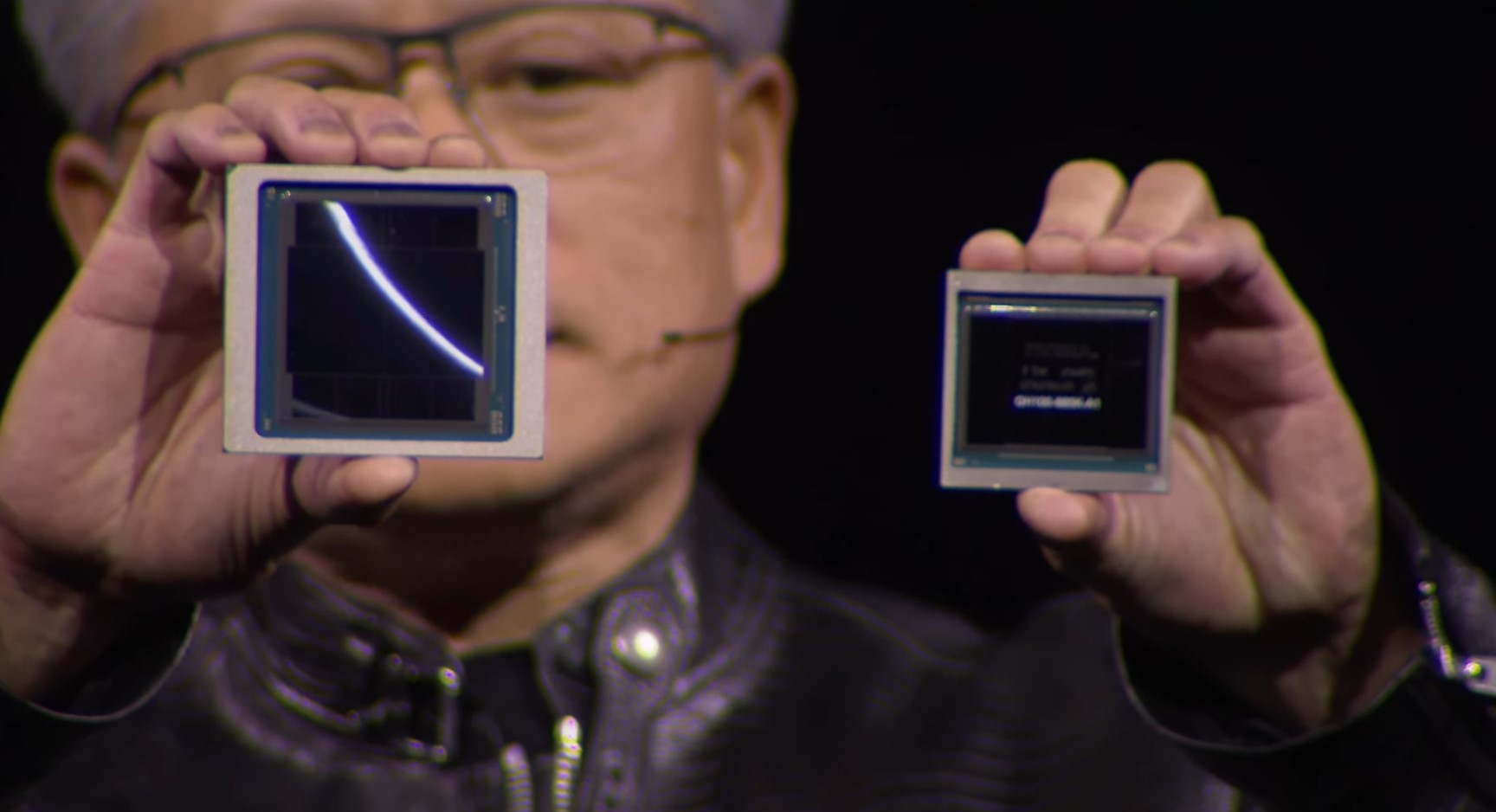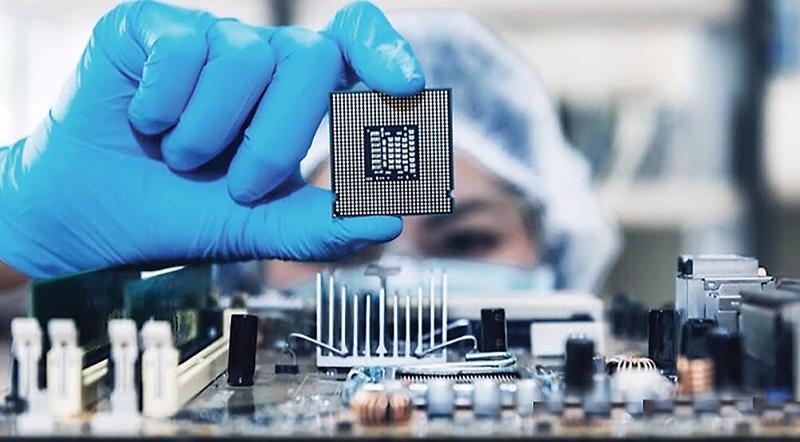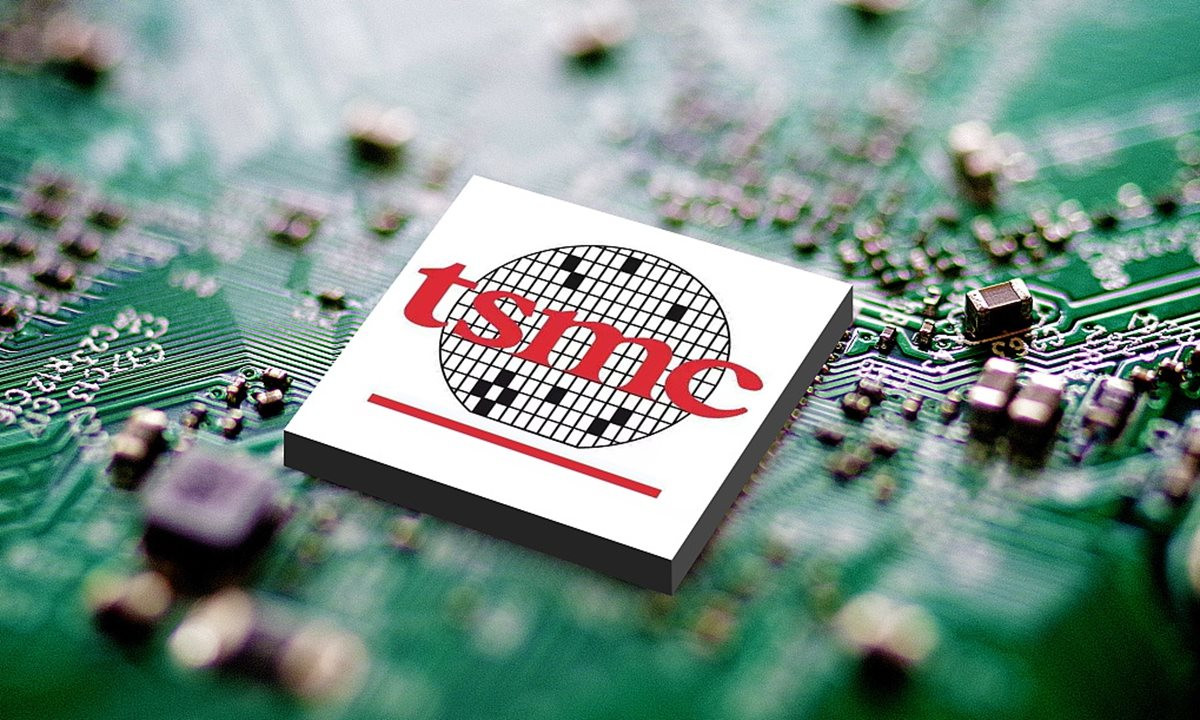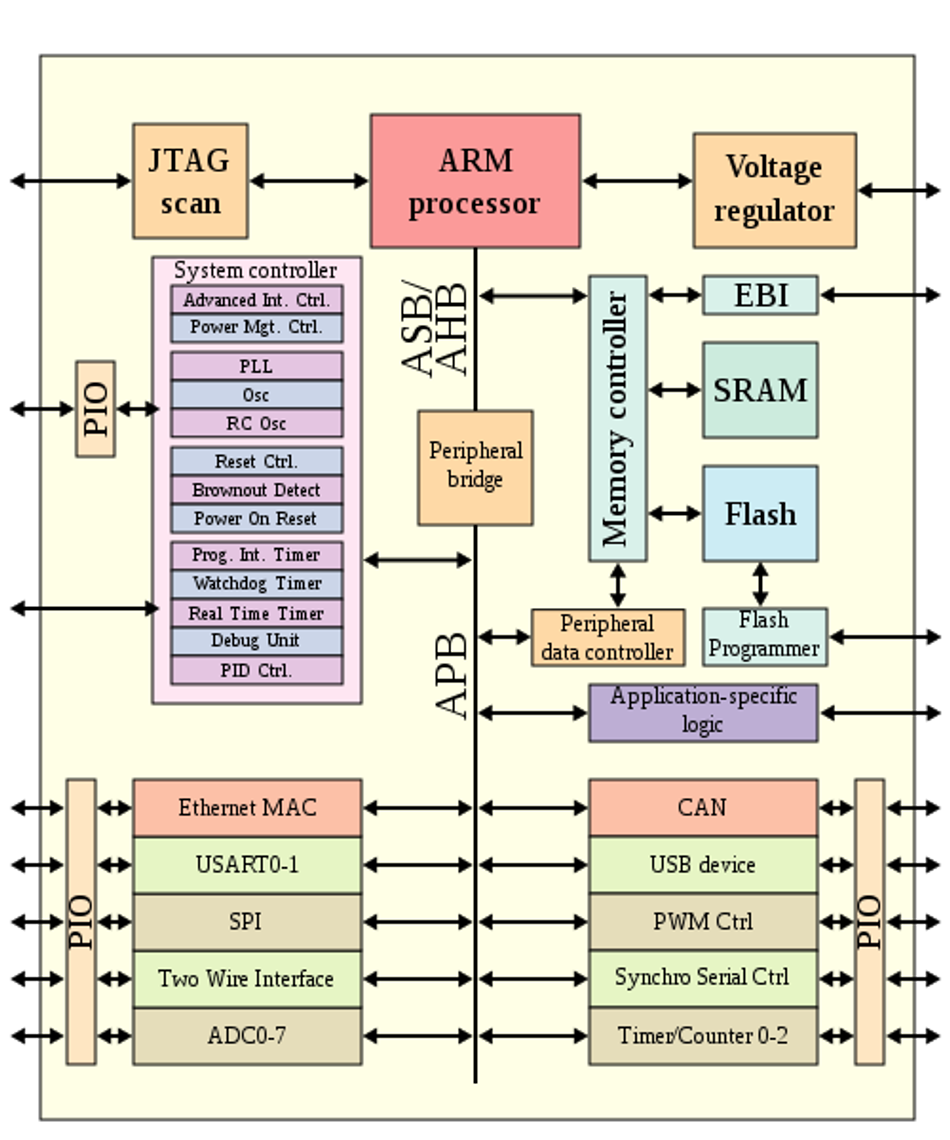 In the ever-evolving world of processor architectures, the showdown between RISC-V and ARM sparks fervent competition. With their distinct histories, these two giants are redefining computing power and igniting discussions on openness, customization, and innovation in microprocessors.
In the ever-evolving world of processor architectures, the showdown between RISC-V and ARM sparks fervent competition. With their distinct histories, these two giants are redefining computing power and igniting discussions on openness, customization, and innovation in microprocessors.
Introduction
RISC-V and ARM are two processor architectures that have gained significant attention in recent years. RISC-V is an open-source Instruction Set Architecture (ISA) based on the Reduced Instruction Set Computing (RISC) principles, while ARM is a proprietary ISA that has become the dominant choice for embedded systems and mobile devices due to its longstanding presence in the market, as well as years of trust and expertise cultivated resulting in widespread reputation.
Comparing these two architectures is essential for understanding their strengths and weaknesses, as well as their potential impact on the future of computing. In this article, we will delve into the history, architectural features, performance, power efficiency, ecosystem, licensing models, use cases, and future prospects of both RISC-V and ARM. By providing a comprehensive comparison, we aim to equip readers with the knowledge necessary to make informed decisions about which architecture best suits their needs and to understand the implications of the ongoing competition between these two processor architectures.
What is an ISA (Instruction Set Architecture)?
At the heart of every processor's functioning lies its Instruction Set Architecture (ISA), a blueprint that outlines the set of instructions a processor can understand and execute. It serves as a fundamental bridge between hardware and software, shaping the capabilities and performance of a processor. The choice of ISA influences how software is developed, and it has a lasting impact on a processor's efficiency, compatibility, and flexibility.
ISAs can be broadly categorized into two types: Open and Closed. Closed ISAs, like ARM, are proprietary and tightly controlled by specific companies (Arm Holdings here), offering established reliability and compatibility but limiting customization. On the other hand, open ISAs, exemplified by RISC-V, are community-driven and provide greater flexibility for customization, fostering innovation and adaptation to specific needs.
The ongoing debate between RISC-V and ARM revolves around the distinct ISAs they embody, each offering unique strengths and approaches to cater to the evolving landscape of computing needs.
RISC-V vs ARM: Background and History
RISC-V
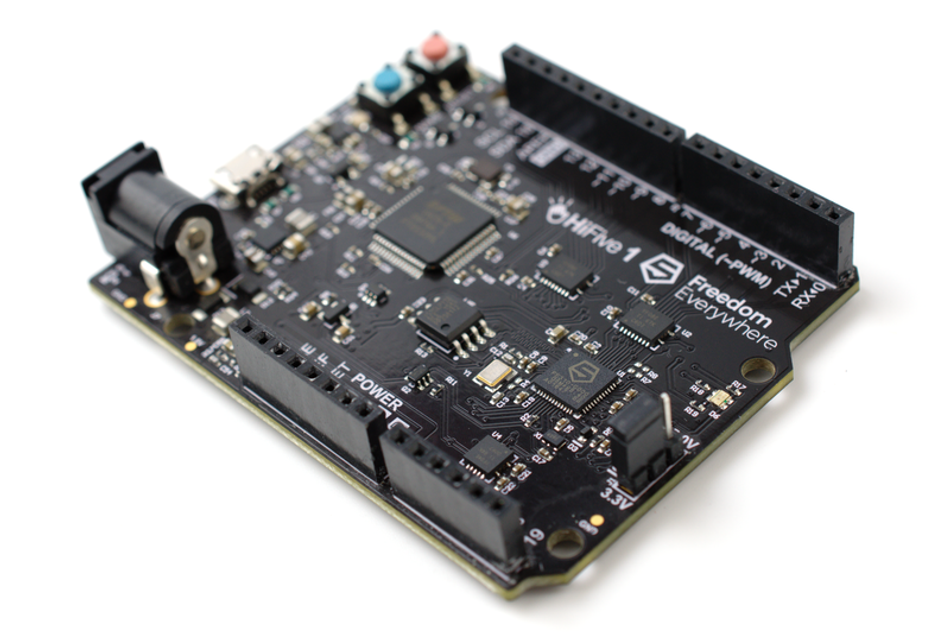
The landscape of computer architecture has been marked by significant developments over the years. Historically dominated by the x86 architecture, which propelled giants like Intel, a new chapter in the story began with the emergence of ARM. Initially focused on creating energy-efficient processors for mobile devices, ARM's success encouraged a shift towards Reduced Instruction Set Computing (RISC) architectures.
While ARM had indeed achieved success in the market, it was a proprietary architecture with licensing fees and limitations on customization. This proprietary nature hindered smaller players, startups, and researchers from fully participating in the development of advanced processors. RISC-V aimed to address these limitations by providing an open-source alternative. Thus, the motivation behind RISC-V's development emerged from a desire for greater openness, customization, and innovation in the realm of processor architectures.
RISC-V has its origins in the Computer Science Division at the University of California, Berkeley. The project began in 2010 as a research endeavor led by professors Krste Asanović, David Patterson, and their team.
The first RISC-V specifications were released in 2011, and the RISC-V International was established in 2015 to promote the adoption and standardization of the RISC-V ISA. The foundation has since grown to include over 200 members, including major technology companies such as Google, NVIDIA, and Western Digital. RISC-V has seen rapid adoption in various industries, with several companies developing and releasing RISC-V-based processors and systems-on-chip (SoCs).
One of the key milestones in RISC-V's history was the release of the RISC-V Privileged Architecture Specification in 2017, which defined the interface between the hardware and the operating system. This specification enabled the development of more sophisticated RISC-V processors and facilitated the porting of operating systems such as Linux to the RISC-V platform.
Another significant milestone was the announcement of the first commercial RISC-V processor, the SiFive Freedom U540, in 2018. This processor demonstrated the viability of RISC-V for commercial applications and paved the way for further adoption of the architecture in the industry.
ARM
ARM, which stands for Advanced RISC Machine, has its roots in Acorn Computers, a British company that developed the Acorn RISC Machine architecture in the 1980s. The ARM architecture was initially designed for use in Acorn's personal computers, with a focus on power efficiency and simplicity. In 1990, Acorn Computers, Apple, and VLSI Technology formed a joint venture called Advanced RISC Machines Ltd., which later became ARM Holdings.
The first ARM processor, the ARM1, was introduced in 1985, and the ARM2 followed in 1986. These early processors were primarily used in Acorn's Archimedes line of computers. However, the ARM architecture gained widespread recognition when Apple chose the ARM610 processor for its Newton personal digital assistant (PDA) in 1993. This marked the beginning of ARM's dominance in the mobile and embedded systems market.
Over the years, ARM has developed multiple processor families, each targeting specific market segments and performance requirements. Some notable ARM processor families include the Cortex-A series for high-performance applications, the Cortex-R series for real-time systems, and the Cortex-M series for microcontrollers and low-power devices.
ARM's success can be attributed to its innovative licensing model, which allows semiconductor companies to license ARM's IP and customize it for their specific needs. This flexibility has enabled various companies, including industry giants like AMD, to design and manufacture ARM-based CPUs and GPUs optimized for different applications, ranging from energy-efficient mobile devices to high-performance servers. This has led to a vast ecosystem of ARM-based processors and devices, with over 180 billion ARM chips shipped to date. Around 30 Billion ARM chips are shipped every year.
The ARM architecture has become the de facto standard for mobile devices, IoT, and embedded systems, with major companies such as Apple, Samsung, and Qualcomm relying on ARM processors for their products.
RISC-V vs ARM: Architectural Overview
RISC-V
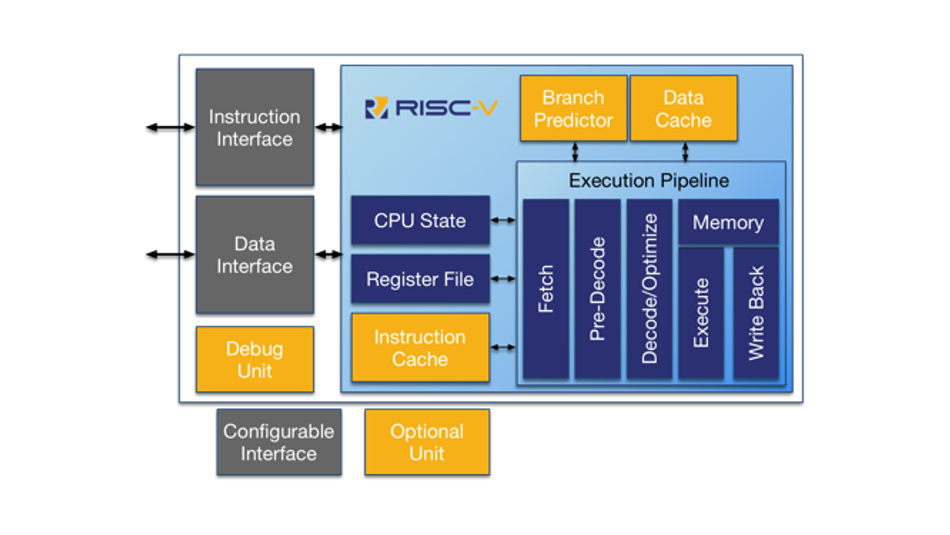
The key architectural features of RISC-V include a load-store architecture, a fixed-length 32-bit instruction format, and a small number of general-purpose registers. RISC-V supports various integer instruction set extensions, such as RV32I (32-bit), RV64I (64-bit), and RV128I (128-bit), which define the base integer instruction set for different address space sizes.
RISC-V utilizes little-endian byte ordering within the memory system, implying that the smallest significant byte of multi-byte data is stored at the lowest memory address.
Below are a few unique features of RISC-V architecture:
- Modularity & Extensibility: One of the defining characteristics of RISC-V is its modularity and extensibility. The ISA is designed to be easily extended with custom instructions and coprocessors, allowing for tailored implementations that meet specific application requirements. This flexibility is achieved through a modular design, where the base ISA can be combined with optional standard extensions, such as the M extension for integer multiplication and division, the A extension for atomic operations, and the F and D extensions for single- and double-precision floating-point arithmetic.
- Compressed instruction set: Compared to ARM’s Thumb instruction set, RISC-V also supports a compressed instruction set extension called RV32C (or RV64C for 64-bit), which provides 16-bit compressed instructions that can be mixed with the standard 32-bit instructions. This feature helps reduce code size and improve energy efficiency, making RISC-V particularly suitable for embedded systems and low-power applications.
- Privilege levels & Virtual Memory: Another important aspect of RISC-V's architecture is its support for privilege levels and virtual memory. The RISC-V Privileged Architecture Specification defines three privilege levels: machine mode (M-mode), supervisor mode (S-mode), and user mode (U-mode). These privilege levels provide a mechanism for isolating the operating system kernel, hypervisors, and user applications, ensuring system security and stability. RISC-V also supports a virtual memory system based on a multi-level page table scheme, enabling efficient memory management and protection.
ARM

ARM architecture is also based on RISC principles, with a focus on power efficiency and simplicity.
The key architectural features of ARM include a load-store architecture, a mix of fixed-length 32-bit and variable-length Thumb instructions, and a large number of general-purpose registers. The memory system employs bi-endian byte-ordering, enabling an ARM processor or machine to seamlessly process and transmit data in both endian formats at the hardware level.
ARM processors are organized into several families, each targeting specific performance and power requirements. The most widely used ARM processor families are the Cortex-A, Cortex-R, and Cortex-M series. The Cortex-A series is designed for high-performance applications, such as smartphones, tablets, and servers. These processors support advanced features like out-of-order execution, superscalar pipelines, and hardware virtualization. The Cortex-R series is optimized for real-time systems, offering fast interrupt response times and deterministic behavior. These processors are commonly used in automotive, industrial, and safety-critical applications. The Cortex-M series is tailored for microcontrollers and low-power devices, with a focus on energy efficiency and ease of use.
- Thumb Instruction Set: ARM processors typically implement the ARM and Thumb instruction sets, with the latter providing 16-bit compressed instructions for improved code density and energy efficiency. ARM introduced the Thumb instruction set as an optional 16-bit extension to the traditional 32-bit ARM instructions. This feature enables code size reduction while maintaining reasonable performance, making it suitable for memory-constrained devices like embedded systems.
- Memory Management & Protection: ARM processors support various levels of memory management and protection, including a Memory Protection Unit (MPU) for simple systems and a Memory Management Unit (MMU) for more complex systems with virtual memory support. The ARMv8-A architecture, introduced in 2011, added support for 64-bit address spaces and introduced the AArch64 execution state, which provides a new 64-bit instruction set alongside the existing 32-bit ARM and Thumb instruction sets.
- Optional Enhancements: In addition to the base ISA, ARM processors can include optional extensions, such as the NEON SIMD (Single Instruction, Multiple Data) extension for multimedia and signal processing tasks, and the Cryptography extension for hardware-accelerated encryption and decryption. These extensions enable ARM processors to efficiently handle a wide range of workloads while maintaining low power consumption and a small silicon footprint.
To conclude, RISC-V champions open-source flexibility and adaptability, attracting developers, researchers, and innovators seeking customizable solutions. In contrast, ARM stands as an industry giant with its proprietary prowess and well-established ecosystem, catering to diverse industries including mobile, embedded systems, and data centers.
RISC-V's modular approach offers customization possibilities, whereas ARM's specialized cores deliver targeted performance. Both architectures have strengths, making the conclusion a matter of context. RISC-V appeals to those prioritizing customization and open standards, while ARM's refined offerings cater to a broad spectrum of applications across different sectors.
RISC-V vs ARM: Performance
The comparison between RISC-V and ARM architectures is multi-faceted and involves a range of factors that influence performance. Let's explore a few of these while also comparing specific models like the P550 vs Cortex-A75 and BeagleV vs Raspberry Pi.
- Core Generations and Progression: The P550 from SiFive is comparable to ARM's Cortex-A75, showcasing RISC-V's capabilities in line with an established ARM core. However, ARM's continuous progression has led to subsequent generations like A-76, A-77, A-78, Cortex-X1, and Cortex-X2, potentially placing the P550 behind ARM's latest models by several generations. ARM's consistent evolution gives them a performance edge.
- Core Equivalents and Efficiency: The BeagleV's U74 core aligns with ARM's Cortex-A55 architecture, while Raspberry Pi incorporates the Cortex-A72, offering potential advantages in performance and cost-effectiveness. ARM's existing core choices provide established options for various performance levels.
- Ecosystem and Industry Adoption: ARM's dominance in the industry stems from its extensive ecosystem, backed by a broad range of software and hardware support. Companies utilizing ARM processors can tap into a mature infrastructure that accelerates development and deployment.
- Customization and Openness: RISC-V's modular and extensible architecture provides customization opportunities that ARM's proprietary architecture might lack. However, ARM's proven track record, stability, and established standards offer a solid foundation for performance optimization.
- Catching Up and Future Prospects: To match ARM's performance standards, RISC-V proponents like SiFive need to continue advancing their core designs, closing the generation gap. ARM's steady progression necessitates sustained efforts from RISC-V to catch up in terms of performance and ecosystem maturity.
Let’s study a comparison between the products of the 2 competitors to get a better understanding. Consider the performance graph below:
As depicted in the illustration (check comparison graph on the link), ARM’s Cortex-A78 marginally outpaces the SiFive’s P670 (using RISC-V) in peak single-thread performance. Despite the Cortex-A78's supremacy in raw performance, the P670 boasts twice the compute density compared to it. Hence, SiFive's P670 processor yields comparable peak single-thread performance to Cortex-A78, considering its chip being physically half the size of its rival.
It's noteworthy that the Cortex-A78 was introduced in December 2020 through the Vivo X60 and X60 Pro, while the P670 was recently unveiled on November 1, 2022, indicating a nearly two-year disparity in research and development. ARM's latest processors now operate on the ARMv9 ISA, a substantial improvement over the Cortex-A78's ARMv8. Notably, ARMv9 processors offer around 30% higher performance and are 50% more energy-efficient.
In terms of pure performance, ARM processors maintain their lead. However, SiFive's P670, with its double compute density over Cortex-A78, positions RISC-V processors advantageously for wearable technologies that thrive on compact processors.
In the performance comparison between RISC-V and ARM, ARM's consistent iteration, comprehensive ecosystem, and wide range of options give it a notable performance advantage. However, RISC-V's modular nature and customization potential hold promise for specific use cases. The ongoing efforts of RISC-V proponents to narrow the performance gap will be a crucial factor in determining how well RISC-V can match ARM's established performance standards in the future.
RISC-V vs ARM: Power Efficiency
RISC-V
The comparison of power efficiency between RISC-V and ARM architecture unveils intriguing insights into their respective prowess in managing energy consumption. As both architectures embrace the Reduced Instruction Set Computing (RISC) philosophy, it's essential to delve into the concrete data and measurable factors that differentiate their power efficiency performance.
Power efficiency is a critical aspect of processor design, especially for embedded systems, IoT devices, and battery-powered applications. RISC-V's architecture emphasizes simplicity and modularity, which can contribute to improved power efficiency compared to more complex processor architectures. The RISC-V ISA allows for the implementation of processors with a small silicon footprint, reducing power consumption and enabling the design of energy-efficient devices.
Several features of the RISC-V architecture contribute to its power efficiency. The fixed-length 32-bit instruction format simplifies decoding and reduces control logic complexity, leading to lower power consumption. The optional RV32C (or RV64C) compressed instruction set extension provides 16-bit compressed instructions, which can help reduce code size and improve energy efficiency by reducing instruction fetch and decode power.
Furthermore, RISC-V's modular design allows for the implementation of custom extensions and hardware accelerators tailored to specific application requirements. This enables the development of processors that only include the necessary functionality, reducing power consumption by eliminating unused hardware features.
Examples of power-efficient RISC-V processors include the PULPino processor, which is designed for IoT and wearable devices, and the GreenWaves GAP8 processor, which targets energy-efficient AI and machine learning applications at the edge. The GAP8 processor features a cluster of eight RISC-V cores and a dedicated hardware accelerator for convolutional neural networks (CNNs), achieving a power efficiency of up to 200 GOPS/W (Giga Operations Per Second per Watt) for AI workloads.
ARM
Power efficiency has been a key focus of the ARM architecture since its inception, making it the preferred choice for many mobile and embedded applications. ARM processors are designed to deliver high performance with low power consumption, enabling the development of energy-efficient devices across a wide range of applications.
Several features of the ARM architecture contribute to its power efficiency. The use of a load-store architecture and a mix of fixed-length 32-bit and variable-length Thumb instructions simplifies decoding and reduces control logic complexity, leading to lower power consumption. Additionally, ARM processors often include power management features, such as dynamic voltage and frequency scaling (DVFS), which allows the processor to adjust its operating frequency and voltage based on workload requirements, further improving energy efficiency.
ARM's processor families, such as the Cortex-A, Cortex-R, and Cortex-M series, are designed with different power and performance targets in mind. For example, the Cortex-M series is optimized for microcontrollers and low-power devices, with a focus on energy efficiency and ease of use. The Cortex-M4 processor, which operates at a frequency of up to 240 MHz and delivers a performance of 1.25 DMIPS/MHz, includes a hardware Floating-Point Unit (FPU) and DSP (Digital Signal Processing) extensions, making it suitable for signal processing and control applications with low power consumption.
In the high-performance segment, ARM processors like the Cortex-A76 achieve excellent performance-per-watt ratios, making them ideal for power-constrained, high-performance devices such as smartphones and laptops. The Cortex-A76 processor operates at a frequency of up to 3 GHz and delivers a peak performance of 4.0 DMIPS/MHz while maintaining low power consumption.
Overall, ARM's focus on power efficiency, combined with its extensive ecosystem and wide range of processor families, has enabled the development of energy-efficient devices across various industries and applications.
Considering the measurable factors and industry trends, we conclude that ARM's refined power management techniques and specialized cores give it a palpable advantage in power efficiency. ARM's established ecosystem, extensive industry adoption, and demonstrated track record amplify its edge. While RISC-V holds promise due to its customization potential, its open nature requires a more extensive investment of time and resources to fully harness its energy-saving capabilities.
RISC-V vs ARM: Ecosystem and Support
The ecosystem and support surrounding architectural choices play a pivotal role in determining their practical viability. In the context of RISC-V and ARM, assessing the strengths and weaknesses of their respective ecosystems and support structures is essential for organizations seeking the most suitable solution for their projects.
Ecosystem Maturity
RISC-V
- As an open-source architecture, RISC-V has attracted a diverse community of developers, startups, and researchers with over 200 members, including major technology companies such as Google, NVIDIA, and Western Digital.
- Compared to ARM, RISC-V's ecosystem is relatively younger but rapidly growing.
- While it might not match ARM's scale yet, its open nature fosters collaboration, customization, and innovation.
ARM
- On the other hand, ARM has cultivated a mature and expansive ecosystem. Its licensing model has led to a vast array of ARM-based products, with over 180 billion ARM chips shipped to date.
- Its ecosystem encompasses a wide range of hardware partners, software tools, and established development boards.
- Lastly, It offers a wealth of resources, support, and a proven track record of successful integration into various applications.
Hardware & Software
RISC-V
In terms of hardware support, several semiconductor companies have developed RISC-V processors and systems-on-chip (SoCs), including SiFive, Andes Technology, and Microchip. These companies offer a variety of RISC-V-based products, ranging from low-power microcontrollers to high-performance application processors. Additionally, the open-source nature of RISC-V has led to the development of numerous open-source processor designs, such as the PULPino and the RISC-V BOOM Out-of-Order Superscalar processor. As Amazon and other tech giants explore RISC-V's capabilities, the landscape of CPU architecture is undergoing a notable shift, with open-source hardware gaining prominence in previously untapped domains.
On the software side, the RISC-V ecosystem includes support for various operating systems, including Linux, FreeBSD, and real-time operating systems (RTOS) like FreeRTOS and Zephyr.
- RISC-V's ecosystem is relatively newer but expanding rapidly.
- Its open nature encourages experimentation and specialization.
- Developers can customize the architecture to suit specific needs, resulting in tailored solutions.
- While the ecosystem might not be as mature as ARM's, it offers flexibility and potential for niche applications.
ARM
Major semiconductor companies, such as Qualcomm, Samsung, and Apple, have developed their own ARM-based processors, catering to various market segments and performance requirements. These processors are used in a wide range of devices, including smartphones, tablets, IoT devices, and embedded systems. On the software side, the ARM ecosystem includes support for numerous operating systems, such as Linux, Android, iOS, and Windows, as well as real-time operating systems (RTOS) like FreeRTOS and VxWorks.
- ARM benefits from a comprehensive and mature ecosystem.
- Its architecture powers a vast array of devices, from smartphones to servers, ensuring a wide range of hardware options, software tools, and libraries.
- Developers can choose from various development boards, compilers, and debugging tools.
Industry Adoption
RISC-V
- RISC-V is gradually gaining traction in sectors where customization, openness, and innovation are paramount.
- Its adoption might not be as widespread as ARM's, but its increasing popularity in areas like edge computing, desktop systems, and IoT indicates a growing ecosystem that caters to specific needs.
ARM
- ARM's extensive adoption across industries lends itself to stable and well-supported solutions.
- Its architecture is deeply integrated into various sectors, making it a go-to choice for many developers.
- The prevalence of ARM-based devices ensures a vast market and a robust ecosystem.
To conclude, while ARM's extensive ecosystem offers stability, proven tools, and a wide range of hardware options, RISC-V's open-source nature fosters collaboration, customization, and innovation.
The choice between the two architectures depends on the specific requirements of the project, with ARM catering to established industries and RISC-V offering a platform for those seeking flexibility and unique solutions.
Licensing and Business Models
The world of semiconductor architecture is not solely defined by technical capabilities; it's also shaped by the business and licensing strategies of the major players. This comparison delves into the licensing and business models of RISC-V and ARM, shedding light on how these approaches influence the development, adoption, and customization of processors.
RISC-V
Open-Source Licensing
- RISC-V operates under permissive open- and royalty-free licenses, such as the Apache License 2.0.
- This encourages transparency, collaboration, and innovation as developers can freely access, study, modify, and distribute the architecture.
Flexibility
- The open-source nature of RISC-V allows organizations to tailor the processor architecture to their specific needs.
- Customization is possible through extensions and configurations, enabling the creation of optimized processors for diverse applications.
Reduced Costs
- One of the major attractions of RISC-V is the elimination of licensing fees.
- This can significantly lower the costs associated with adopting and developing products based on RISC-V processors.
Ownership Control
- Organizations using RISC-V have full control over their processor designs, reducing dependence on a single vendor.
- This ownership control can be particularly advantageous for companies aiming to protect their intellectual property.
ARM
Licensing Tiers
- ARM offers multiple licensing tiers, including the ability to access various instruction sets and architectures based on the licensing level.
- This tiered model allows companies to choose the level of access that aligns with their requirements.
Proprietary Elements
- While ARM provides openness through its architecture, some advanced features or technologies might be proprietary and require licensing agreements.
- This mix of openness and proprietary elements allows ARM to maintain a balance between customization and protection of valuable innovations.
Licensing Fees
- Depending on the extent of usage, ARM's licensing model often involves licensing fees.
- These fees contribute to ARM's revenue model and can impact the overall cost structure for companies using ARM processors.
Vendor Relationship
- Adopting ARM processors often involves partnerships with ARM or its licensees.
- Companies might collaborate closely with ARM to access premium features, support, and customizations
In comparison, while RISC-V offers open-source licensing, flexibility, reduced costs, and ownership control, ARM provides licensing flexibility, a mix of proprietary and open elements, licensing costs, and a collaborative ecosystem. Both options have unique advantages that organizations should consider when selecting a processor architecture for their projects.
Use Cases and Applications
RISC-V
RISC-V processors are suitable for a wide range of use cases and applications, thanks to their modular and extensible architecture. The flexibility of the RISC-V ISA enables the development of custom processor designs tailored to specific application requirements, making RISC-V an attractive option for various industries and markets. In fact, companies like Amazon have recognized the potential of RISC-V in enabling customized solutions for their specific needs.
One of the primary use cases for RISC-V processors is in low-power embedded systems and IoT devices. The simplicity and power efficiency of RISC-V make it an ideal choice for applications with tight energy constraints, such as wearables, smart sensors, and home automation systems. Examples of RISC-V-based IoT devices include the GreenWaves GAP8 processor, which targets energy-efficient AI and machine learning applications at the edge, and the PULPino processor, designed for IoT and wearable devices.
RISC-V processors are also gaining traction in the data center and high-performance computing (HPC) markets. The modularity of the RISC-V ISA allows for the development of high-performance processors with custom extensions and hardware accelerators, enabling efficient processing of complex workloads such as AI, machine learning, and big data analytics. Examples of RISC-V-based HPC processors include the SiFive U74 and the RISC-V BOOM Out-of-Order Superscalar processor.
Additionally, RISC-V is being explored for use in safety-critical and real-time systems, such as automotive, aerospace, and industrial control applications. The open-source nature of RISC-V enables transparent and thorough verification of processor designs, which is crucial for ensuring the safety and reliability of critical systems.
ARM
ARM processors are used in a diverse range of use cases and applications, thanks to their power efficiency, performance, and extensive ecosystem. The various ARM processor families, such as Cortex-A, Cortex-R, and Cortex-M, cater to different market segments and performance requirements, making ARM a versatile choice for many industries and markets.
One of the most prominent use cases for ARM processors is in mobile devices, such as smartphones and tablets. The power efficiency and performance of ARM processors make them an ideal choice for battery-powered devices with demanding workloads. Major smartphone manufacturers, including Apple, Samsung, and Huawei, rely on ARM-based processors for their flagship devices.
ARM processors are also widely used in embedded systems and IoT devices, such as smart sensors, home automation systems, and industrial control systems. The Cortex-M series, designed for microcontrollers and low-power applications, is particularly well-suited for these use cases. Examples of ARM-based IoT devices include the STM32 series of microcontrollers from STMicroelectronics and the nRF52 series of wireless SoCs from Nordic Semiconductor.
In addition to mobile and IoT applications, ARM processors are increasingly being adopted in the data center and high-performance computing (HPC) markets. The ARM Neoverse platform, which includes the Neoverse N1 and E1 processors, targets cloud infrastructure and edge computing applications, offering high performance and energy efficiency for data center workloads.
Furthermore, ARM processors are used in safety-critical and real-time systems, such as automotive, aerospace, and industrial control applications. The Cortex-R series, optimized for real-time systems, offers fast interrupt response times and deterministic behavior, making it suitable for these demanding applications.
Conclusion
In summary, both RISC-V and ARM processor architectures offer unique advantages and cater to different market segments and performance requirements. RISC-V's open-source, modular, and extensible architecture enables the development of custom processor designs tailored to specific applications, making it an attractive option for various industries. The success of open-source Linux demonstrates the power of collaboration, innovation, and accessibility in reshaping an industry. Similarly, RISC-V's open design ethos empowers customization and invites a community-driven approach. ARM's power efficiency, performance, and extensive ecosystem have made it the dominant choice for mobile devices, embedded systems, and IoT devices. The ongoing competition between RISC-V and ARM will continue to shape the future of the processor industry, with both architectures offering compelling solutions for different use cases and applications.
Frequently Asked Questions (FAQs)
What is the main difference between RISC-V and ARM architectures?
RISC-V is an open-source instruction set architecture (ISA) based on reduced instruction set computing (RISC) principles, while ARM is a proprietary ISA that has become the dominant choice for embedded systems and mobile devices.
Are RISC-V processors more power-efficient than ARM processors?
Power efficiency depends on the specific implementation and target application. Both RISC-V and ARM architectures emphasize power efficiency, and processors based on these architectures can be designed to meet various power and performance requirements.
Can RISC-V processors compete with ARM processors in terms of performance?
The performance of RISC-V processors can be competitive with ARM processors, depending on the specific implementation and target application. RISC-V's modular and extensible architecture allows for a wide range of processor designs, from simple microcontrollers to high-performance application processors.
What are the main use cases for RISC-V and ARM processors?
RISC-V processors are suitable for a wide range of use cases, including low-power embedded systems, IoT devices, data centers, desktop systems, and high-performance computing applications. ARM processors are widely used in mobile devices, embedded systems, IoT devices, data centers, and safety-critical and real-time systems.
How do the licensing models of RISC-V and ARM differ?
RISC-V adopts an open-source licensing model, allowing semiconductor companies, researchers, and developers to create custom processor designs based on the RISC-V architecture without incurring additional costs. ARM follows a proprietary licensing model, licensing its processor IP to semiconductor companies, which in turn develop and manufacture ARM-based processors and systems-on-chip (SoCs).
Nguồn: https://www.wevolver.com/

